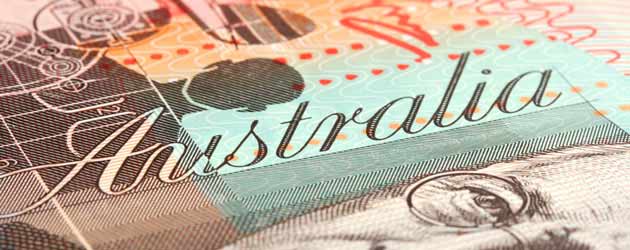
The Australian Dollar improved by around 0.25 cents against the Pound earlier this morning in response to a slightly more positive Reserve Bank of Australia Minutes Report than had been anticipated.
At the previous meeting in December the RBA cut the benchmark interest rate by 25 basis points from 3.25% to 3.00%. Since then Central Bank Governor Glenn Stevens has mentioned that the RBA are willing to implement further quantitative easing if “necessary to support demand”. With this recent wave of dovish rhetoric in mind, markets were expectant of another dose of negative sentiment.
However, the Minutes from the Australian Central Bank’s February 5th meeting showed that policymakers were happy to sit back and enjoy the view as the recent stimulus works its way through the Australian economy. The RBA highlighted that interest rates had already been 175 basis points since 2011, signaling that policymakers are happy with the current economic outlook.
The optimistic RBA Minutes Report, which focused on stronger domestic demand across Asia and rising Iron Ore prices, rather than further interest rate cuts or downside risks, boosted the appeal of the Australian Dollar and led to a rally of around a quarter of a cent against Sterling to 1.4975 (GBP/AUD).
In reaction to the news the ‘Aussie’ Dollar appreciated by around 0.15 cents against the US Dollar (AUD/USD), 0.30 cents against the New Zealand Dollar (AUD/NZD), 0.15 cents against the Japanese Yen (AUD/JPY), 0.15 cents against the Euro (EUR/AUD), and 0.10 cents against the Canadian Dollar (AUD/CAD).
The Australian Dollar was already around 0.50 cents up against the Pound on Monday, prior to the Minutes Report, as the Group of Twenty abstained from officially criticizing Japan’s aggressive monetary policy plans.
The latest buzz-phrase to grip markets with fear is ‘currency war’. The idea of a currency war is that central governments may try to purposefully bring down the value of their currency in order to improve demand for their exports. This is known as ‘competitive devaluation’. The process is generally considered to be dangerous for the global economy because it interferes with financial markets and can lead to unsustainable imbalances.
Top Finance Ministers and Central Bankers from the world’s largest twenty economies met in Moscow last week to discuss the problem of ‘competitive devaluation’, and although the Japanese Yen has plummeted in value against the majority of its currency peers since Shinzo Abe became Prime Minister in December, the G-20 agreed that there was nothing wrong with its quantitative easing policies, that are purportedly designed to help drag Japan out of recession.
Japan is a strong outlet for Australia’s exports, so naturally any improvements perceived in the Japanese economy are likely to be mirrored in the Australian economy. Subsequently, the veritable ‘thumbs-up’ from the G-20 to Japan’s aggressive monetary easing plans was interpreted positively for the Australian Dollar.

Comments are closed.